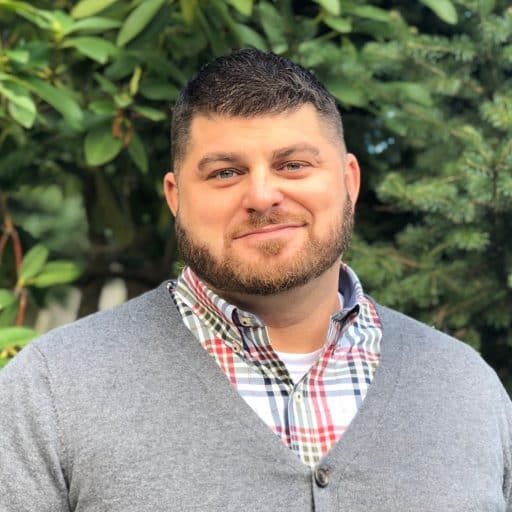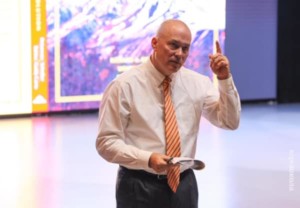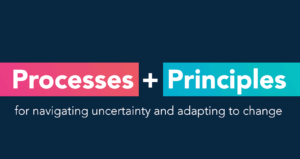Navigating School Leadership: 5 Lessons

Managers execute in the place that they are.
Leaders transport groups to places they’ve never been.
As educational leaders, principals and superintendents must sequence complex tasks–often formulating a mixture of improving the old system and building the new system– in a way that is manageable for the staff (and community) to incorporate. Agreement crafting and the articulation of where you are taking people is an art and a science and goes a long way in navigating your course.
In her writings after World War II, the Polish poet Szymborska said “I apologize to big questions for small answers.” Pondering the reality of this quote establishes a desire to create the future of learning and if intentionally embraced, leaders won’t have to offer that apology if they ask and help their community answer the big questions. In this blog, we look at five lessons learned, specific to the navigation of school leadership. Meet the new year, your staff and your community where they are at with the intention of traveling with them, in where you would like to take them.
Lesson 1: Great Leaders Must Also Be Great Managers.
“A manager says ‘GO,’ a leader says ‘Let’s Go.’ – John Maxwell
With the challenge of keeping pace with elevated expectations and the emerging reality of the importance of the evolution of learning, good leaders need to be both. Through stripping down definitions, to lead is to “go before or show the way,” a partnered navigator of where a group will go and manage is to “control,” “to take charge” with the task of “manipulating resources and direction.” With aspirations of truly leading, our learnings have brought us to the reality that both roles are needed in charting the course.
As a leader, it is critical to roll up your sleeves and engage in the work. It motivates your team and sets a stage for “we are in this together.” While motivating, school leaders also need to manage resources and negotiate resources for the community to find success in reaching their established destination. This “dance” between the two is best accomplished through clear communications of your why and transparency of actions.

Tip: Capture your personal mantra that bridges the two worlds, a non-negotiable if you will, and make it public. Stay true to assessing decisions through this lens and lead with your community, while not fearing decisions that need to be made. As you share and live it, you will be amazed at how quickly individuals within your community begin to trust your intentions.
Lesson 2: In the broadest sense, leadership is politics. It is the formulation of temporary coalitions in support of public agreements.
Great leaders innovate and execute, they coach like Akil E. Ross and disrupt like Kaleb Rashad. They help teams operate at very high levels under existing conditions and, with intentional actions, break and reshape conditions for the benefit of students. Distributed leadership and some degree of specialization help spread the load but every school needs an agenda that finds a balance between improvement and innovation. The momentum gained through expanding the capacity of staff through highlighted strengths generates shared ownership towards the growth of the community.

Tip: Place an ideation board in a common space within your school building or district office that allows for voice in generating solutions to existing components or new innovations within your organization.
Lesson 3: You are not alone, schools are part of a greater learning community. Do not fear it, embrace it.
Isolation can feel dooming and in those moments, school leaders must have presence of mind to recognize that they are not alone. Even more so, lean in as you pursue relationships with partners in places that you previously did not consider. With increased intentionality behind teaching and growing whole learners, community has never been more important. Whether it is initiative funding support or an expansion of caring adults prepared to provide new learning to students, we must increase our pursuit of a “village” mentality in better serving students. From community centered Disruption Days at the One Stone School of Boise, that partners with community to “forge an army of good for good” or whole system accountability through strategic shifts outlined in the Tacoma Whole Child Initiative (TWCI), it comes down to being intentional with maximizing partnerships within the larger learning community.
Tip: Go for a walk. Make your presence known in the community that you serve by introducing yourself to local businesses, churches and organizations. Expand the “walls” of your school to include the internal and community at-large.
Lesson 4: Leaders articulate a compelling vision of how the system should work.
A change effort starts with looking at the system with new eyes and surfacing existing agreements and assumptions. Least well understood, and central to the role of the leader, is the question: how should the system work? With growing diversity, emerging opportunities and challenges of information technology, evolving knowledge about high-performance organizations, and a new proposition that all students can and should achieve at high levels, it’s still not clear what success at scale will look like. The new proposition of the standards movement—that all students should leave high school prepared for college, work and citizenship—is widely accepted but far from reality. It’s tough, but leaders need to paint a vision of a desired future state.
 Tip: Regardless of the accountability system within your district or network, be intentional and collaborative in the design of a strategic plan. Be honest in assessing current realities(ongoing) as you lead the curation of where the learning community will collectively go. In following suit, be public about the outcomes for the “world” to see, comment and even condemn as a reflective activity that will accelerate progress.
Tip: Regardless of the accountability system within your district or network, be intentional and collaborative in the design of a strategic plan. Be honest in assessing current realities(ongoing) as you lead the curation of where the learning community will collectively go. In following suit, be public about the outcomes for the “world” to see, comment and even condemn as a reflective activity that will accelerate progress.
Lesson 5: Leaders need to lead the charge in regards to new learning.
Leaders need to be the lead learners within their community welcoming opportunities to study a variety of approaches and insights that could improve their abilities. With growing access to innovations throughout the world and an open intentionality in sharing the findings, the time is now. Pursue conversations that lead to new learning, the ability to develop a shared vision and agreements that keep a community moving. This is complicated work and needs to be broken down.
Tip: What are you reading? What TED talk did you watch that created as many questions as answers? Engage in a book study or learning opportunity with your community that has relevance in supporting or even better, accelerating growth. Place value in the need with expectations for those that engage and start lots of conversations.
While this in no way is an inclusive list, it is a start. Read it with a someone that pushes your thinking (if you do not have one of those, that would be a must find) and brainstorm all of the lessons that did not make this list. Start a new list for the new year, with relentless resolve in improving the learning community you serve. As a final note, go visit schools. Take a variety of individuals from your learning community with you and share discoveries with the larger community upon your return. The opportunity to lead is a gift, enjoy!
For more, see:
- The New Work of Network Leadership
- Getting Smart Podcast | 21 Insights: Adventures in Learning to Lead
- How Does Wrap-Around Leadership Inspire Lifelong Learning in Principals?
- Educating the Whole Child by Capturing Hearts
Stay in-the-know with all things EdTech and innovations in learning by signing up to receive the weekly Smart Update. This post includes mentions of a Getting Smart partner. For a full list of partners, affiliate organizations and all other disclosures please see our Partner page.








0 Comments
Leave a Comment
Your email address will not be published. All fields are required.